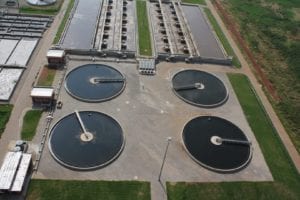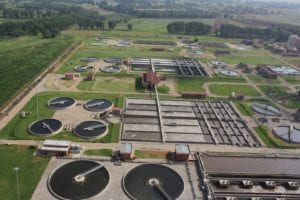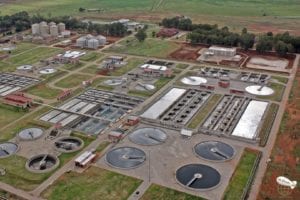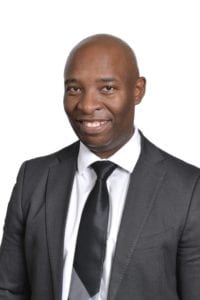ERWAT’s operations and maintenance (O&M) systems are among the better ones within wastewater treatment plants in South Africa. With a strategic vision to collaborate with municipal entities locally and across the developing world, ERWAT’s expanding business model already provides outsourced O&M solutions for private industry and other municipalities.
Through managing the wastewater needs of the City of Ekurhuleni, the East Rand Water Care Company (ERWAT) is the sole provider of this essential service to a community that now numbers close to four million. Within the mix are key industries like agriculture, manufacturing and mining, which collectively make a major contribution to South Africa’s GDP performance. ERWAT currently has 19 plants, a number of which are operating beyond their design capacity: some of these facilities date back to the 1950s and all of them were designed to operate independently to service dedicated towns and their industries. However, thanks to an effective and efficient O&M regime, these critical works remain compliant. In the meantime, detailed plans are in place to meet medium- and longer-term demand projections and, in the process, consolidate, upgrade and reengineer a select number of these facilities to meet ERWAT’s forward strategy, working with consulting engineers and specialist contractors as part of the construction mix. The end result is that the current decentralised set-up will transition to a centralised network with fewer plants, which are scaled up to meet socio-economic priorities via pipeline and intelligent ICT infrastructure. That will also entail the rationalisation of approximately 136 existing wastewater pump stations. “In terms of both current and future operations, achieving the right balance between capex and opex costs is the key,” explains Fortune Mabunda, executive manager: Operations. “For now, we need to stretch our efficiencies; in this respect, ERWAT has performed exceptionally well thanks to our expert knowledge and experience. Despite escalating cost pressures and budget constraints, we’ve been able to cover capex gaps through improved processes, without a shortfall in wastewater outcomes. On top of this, most of our plants remain compliant and meet local and international standards.” Achieving the best efficiencies depends on investing in the right technologies. These include NEREDA® at the Hartebeesfontein facility, HYBACS® at Tsakane, and micro tertiary filtration systems at the Jan Smuts plant.A multifaceted approach
 ERWAT is now taking a multifaceted approach that extends beyond Ekurhuleni to include technical advice and O&M solutions for municipal wastewater treatment works (WWTWs) as well as private industry, nationally. In the latter respect, ERWAT already provides O&M services for key private FMCG clients in the Gauteng region, including Heineken and Nestlé. Further afield, ERWAT is planning to expand its business model in Africa and already has expressions of interest from public utilities in Kenya and Uganda, where the intention is to set up ERWAT laboratories and introducing its O&M framework.
On the global front, ERWAT was a returning stakeholder and part of the South African Water Sector Pavilion at the 2018 World Water Week summit in Sweden. “It’s encouraging to see that South Africa is aligned internationally in terms of the policies and strategies outlined in the UN Sustainable Development Goals. As in many parts of the world, the challenge locally is implementation, which requires cooperation and input from the private and public sectors, as well as communities,” says Mabunda.
ERWAT is now taking a multifaceted approach that extends beyond Ekurhuleni to include technical advice and O&M solutions for municipal wastewater treatment works (WWTWs) as well as private industry, nationally. In the latter respect, ERWAT already provides O&M services for key private FMCG clients in the Gauteng region, including Heineken and Nestlé. Further afield, ERWAT is planning to expand its business model in Africa and already has expressions of interest from public utilities in Kenya and Uganda, where the intention is to set up ERWAT laboratories and introducing its O&M framework.
On the global front, ERWAT was a returning stakeholder and part of the South African Water Sector Pavilion at the 2018 World Water Week summit in Sweden. “It’s encouraging to see that South Africa is aligned internationally in terms of the policies and strategies outlined in the UN Sustainable Development Goals. As in many parts of the world, the challenge locally is implementation, which requires cooperation and input from the private and public sectors, as well as communities,” says Mabunda.
Reuse makes sense
“One area with huge potential is water reuse, initially targeted at industry and agriculture. However, given South Africa’s worsening water-scarcity situation, reuse could soon become a necessity rather than an option for wider consumption, which includes domestic users,” he continues. “Initially, we’re talking about reuse for industrial purposes – taking the pressure off available potable supply.” A prefeasibility study carried out in conjunction with Ekurhuleni has shown that two of ERWAT’s plants, namely Waterval and Olifantsfontein,are well suited for reuse streams. Phase II of this feasibility study is now investigating public-private partnership (PPP) opportunities. The potential is for around 85 Mℓ per day and ERWAT has identified the top 100 industrial companies within the Ekurhuleni region with a view to formalising off-take agreements. Blending reuse is also part of the plan in future potable supply scenarios, Mabunda adds. Singapore and Australia are two examples of countries that have embraced reuse for potable requirements. Australia is also using reused water to recharge underground water sources. A similar route is being considered for Cape Town in terms of the Cape Flats Aquifer recharge initiative.
Sludge has a value
 ERWAT is also investigating the sludge side of things, which includes PPP initiatives. Here, planning is at an advanced stage, with ERWAT in discussions with key international specialists. These include a UK-based OEM that has developed a proprietary sludge pasteurisation technology. The sludge comes out as a beneficial product and meets the South African A1A guidelines for agricultural use. ERWAT produces around 250 tonnes of sludge daily. Currently, this is supplied free of charge to agricultural users. In its present format, it still needs to be mixed with other products to produce compost. Once ERWAT starts beneficiating, though, this will no longer be required and a whole new industry will have been created, with major SME distribution opportunities and a significantly reduced reliance on fertiliser imports.
Key beneficial products that can be extracted from the waste stream prior to pasteurisation are struvite (magnesium ammonium phosphate) and off-take gas for renewable energy generation. Compost is the end product once it has been ultra-pasteurised. The model can be replicated at other WWTWs throughout South Africa, Africa and the rest of the developing world.
Gas- and palletised-sludge-to-energy initiatives would make plants self-sufficient, selling surplus electricity back into the grid. ERWAT is conducting further research and has identified the Waterval plant, its largest facility, as the best suited to launch a PPP project. “Our operating philosophy is evolving to include resource mining from wastewater and to regard reuse and discharge as part of a continuous cycle,” says Mabunda.
ERWAT is also investigating the sludge side of things, which includes PPP initiatives. Here, planning is at an advanced stage, with ERWAT in discussions with key international specialists. These include a UK-based OEM that has developed a proprietary sludge pasteurisation technology. The sludge comes out as a beneficial product and meets the South African A1A guidelines for agricultural use. ERWAT produces around 250 tonnes of sludge daily. Currently, this is supplied free of charge to agricultural users. In its present format, it still needs to be mixed with other products to produce compost. Once ERWAT starts beneficiating, though, this will no longer be required and a whole new industry will have been created, with major SME distribution opportunities and a significantly reduced reliance on fertiliser imports.
Key beneficial products that can be extracted from the waste stream prior to pasteurisation are struvite (magnesium ammonium phosphate) and off-take gas for renewable energy generation. Compost is the end product once it has been ultra-pasteurised. The model can be replicated at other WWTWs throughout South Africa, Africa and the rest of the developing world.
Gas- and palletised-sludge-to-energy initiatives would make plants self-sufficient, selling surplus electricity back into the grid. ERWAT is conducting further research and has identified the Waterval plant, its largest facility, as the best suited to launch a PPP project. “Our operating philosophy is evolving to include resource mining from wastewater and to regard reuse and discharge as part of a continuous cycle,” says Mabunda.









